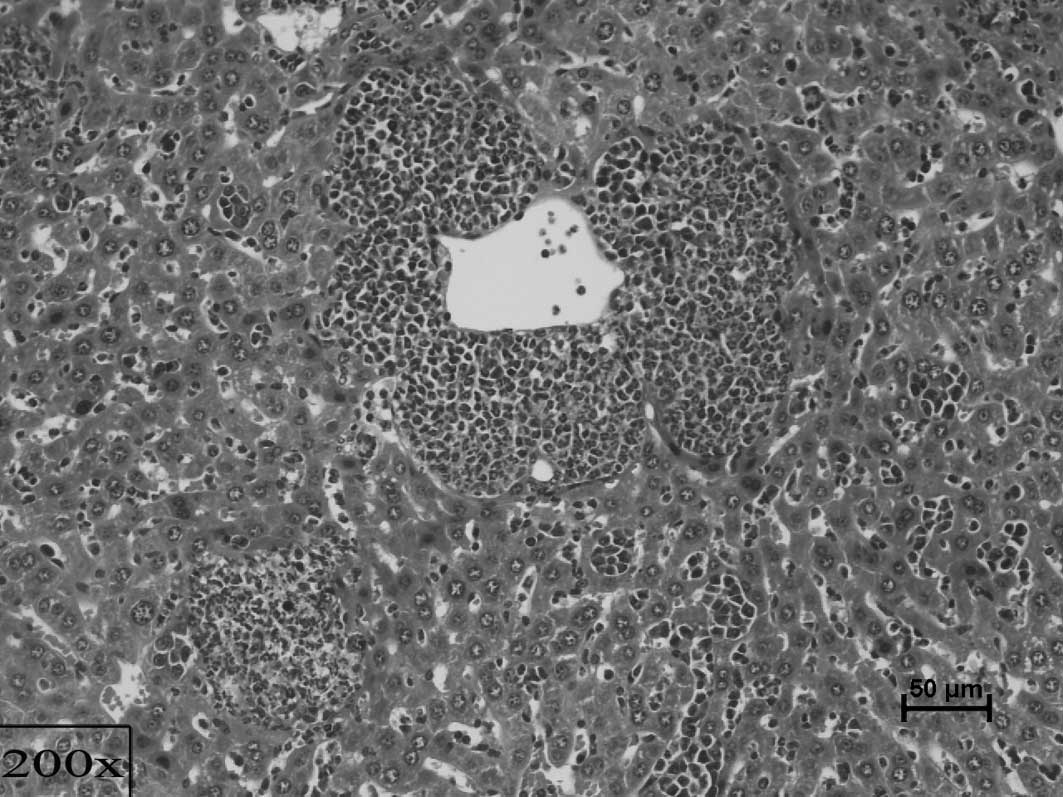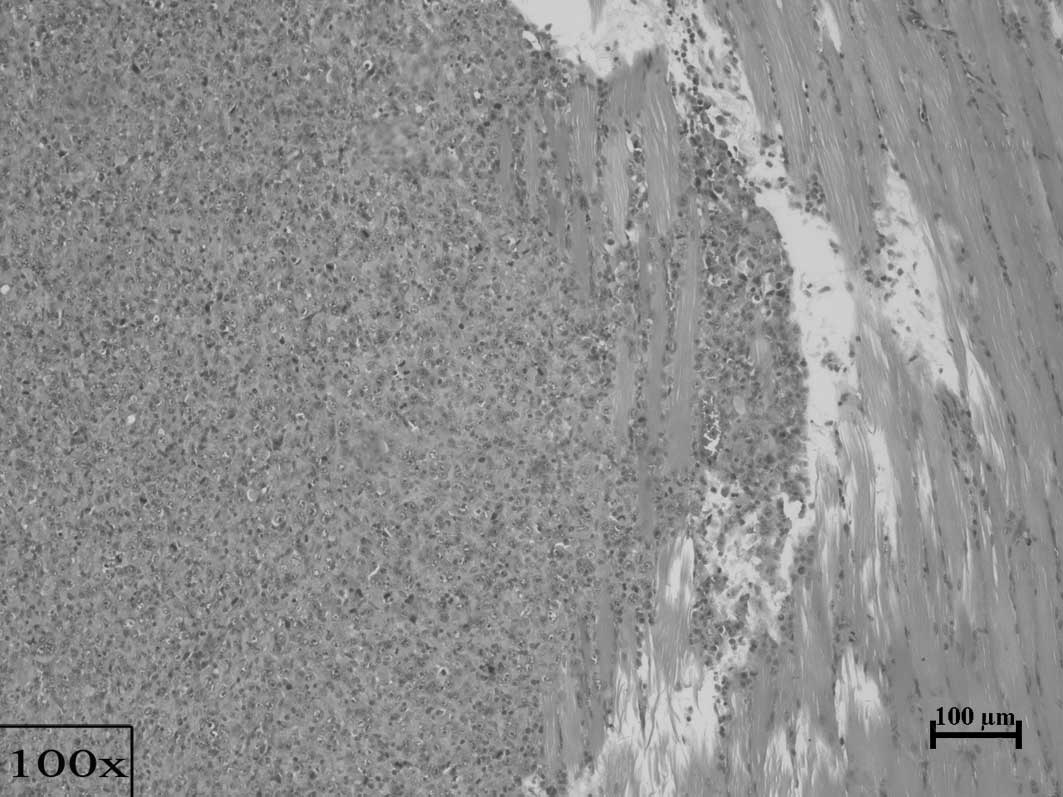A comparative histopathological study of systemic candidiasis in association with experimentally induced breast cancer
- Authors:
- Published online on: January 1, 2010 https://doi.org/10.3892/ol_00000039
- Pages: 215-222
Metrics:
Total
Views: 0 (Spandidos Publications: | PMC Statistics:
)
Total PDF Downloads: 0 (Spandidos Publications: | PMC Statistics:
)
Abstract
Systemic candidiasis is a fungal infection which coupled with solid malignancies places patients at high risk of succumbing to the disease. Few studies have shown evidence of the relationship between systemic candidiasis and malignancy-induced immunosuppression disease especially in breast cancer. At present, animal studies that exclusively demonstrate this relationship have yet to be conducted. The exact causative mechanism of systemic candidiasis is currently under much speculation. This study therefore aimed to demonstrate this relationship by observing the histopathological changes of organs harvested from female Balb/c mice which were experimentally induced with breast cancer and inoculated with systemic candidiasis. The mice were randomly assigned to five different groups (n=12). The first group (group 1) was injected with phosphate buffer solution, the second (group 2) with systemic candidiasis, the third (group 3) with breast cancer and the final two groups (groups 4 and 5) had both candidiasis and breast cancer at two different doses of candidiasis, respectively. Inoculation of mice with systemic candidiasis was performed by an intravenous injection of Candida albicans via the tail vein following successful culture methods. Induction of mice with breast cancer occurred via injection of 4T1 cancer cells at the right axillary mammary fatpad after effective culture methods. The prepared slides with organ tissues were stained with hematoxylin and eosin, periodic acidic schiff and gomori methenamine silver stains for a histopathological analysis. Grading of primary tumour and identification of metastatic deposits, as well as scoring of inflammation and congestion in all the respective organs was conducted. Statistical tests performed to compare groups 2 and 4 showed that group 4 exhibited a highly statistically significant increase in organ inflammation and congestion (p<0.01). The median severity of candidiasis in the kidneys and liver also increased in group 4 as compared to group 2. In conclusion, based on the above evidence, systemic candidiasis significantly increased in mice with breast cancer.














